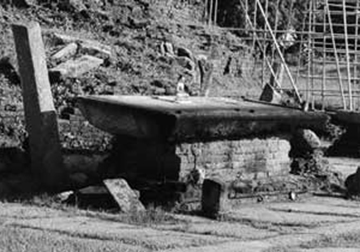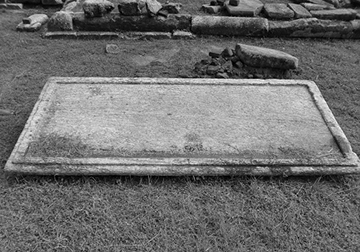About Digavapiya
Ancient Stronghold of Deegawapiya

‘Deegawapiya’ graced by the Lord Buddha is renowned as one of the sacred ancient religious sites among the sixteen places of worship of the Buddhist devotees. According to the Mahawansa, the history of Deegawapiya Buddhist temple and the site with archaeological importance dates back to the 3rd century BCE.
Annals confirm that the mega Stupa was built by King Saddhatissa, the brother of Dutugemunu by depositing precious ‘Nail Relics’ of Lord Buddha.
According to the Mahawansa, the Buddha on his third visit to Sri Lanka, after spending the day at the Adam's Peak arrived at the Deegawapiya.
Mahawansa states that the King Kavantissa stationed his second son, Prince Tissa in Deegawapiya with troops and chariots in-order-to guard the region while assigning him to develop the irrigation and cultivation as it was one of the key areas for food production.
Later, King Saddhatissa in this kingship built the Deegawapiya Stupa together with its temple for Venerable Maha Sanga.
Seeing the miserable status of the temple, King Keerthi Sri Rajasinghe ( 1747 - 1781) carried out major renovations and handed it over to Rev. Bandigide Negrodha thero along with 1000 'amunu' (2000-2500 acres) of land, in 1756.
In 1916, a priest called Kohukumbure Revatha thero started searching for this Stupa and he found people carrying bricks in carts. When inquired, he was told that they were from a great brick mound deep in the jungle. He followed these craftsmen and found the Stupa in absolute ruins.
He arrived back with a few fellow Buddhists from Colombo and started renovating this ancient temple. Further, he reclaimed 250 acres of land back to the temple since the Deegawapiya lands were then dominated by outsiders who were given refugee status by King Senerath when they were expelled by Portuguese from the coastal regions.
The King not only allowed refugee status, but also destroyed the Portuguese fort at the port called "Deegavapi Thitha" for them to carry out their business activities freely.
But in 1950 Kohukumbure Revatha thero was brutally murdered by a resident in the area.



